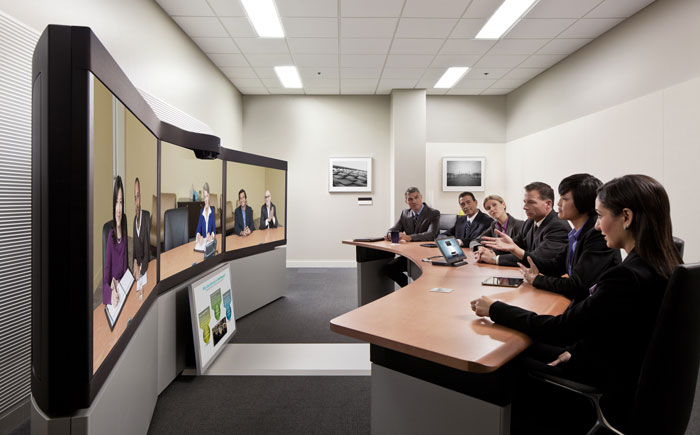Telepresence will change learning, work, and life
The first time I experienced any form of telepresence was probably 10 years ago at a Cisco Systems office. They produced a hi-tech corporate teleconferencing room that was and is fairly expensive but  unique in how it makes the room participants feel connected to one another. It worked by connecting like rooms together. For example I was in a teleroom in Vancouver connected to identically equipped and designed rooms in various US cities and we were able to see each other and our voices were heard in relation to where we sat. The cameras would auto focus on the speaker. Participants could present from any of the rooms to all participants. That was than but the world has changed, dramatically.
unique in how it makes the room participants feel connected to one another. It worked by connecting like rooms together. For example I was in a teleroom in Vancouver connected to identically equipped and designed rooms in various US cities and we were able to see each other and our voices were heard in relation to where we sat. The cameras would auto focus on the speaker. Participants could present from any of the rooms to all participants. That was than but the world has changed, dramatically.
Do you remember when Sheldon on the TV show Big Bang Theory confined himself to his room and would only ‘come out’ as a telepresence robot? Well, I was at a conference this past week in Montreal, an historic city in Quebec eastern Canada and at one of the evening networking events, a colleague from a local Vancouver software company was telling me about a telepresence robot they bought for a couple of thousand dollars. I didn’t believe him at first but then he said “let’s install the app (Double) on your phone and I’ll show you”. So, we downloaded the app, he logged into it, and we were connected from Montreal to the robot in his office in Vancouver. The robot from Double Robotics is a Segway with a ‘neck’ that can go up or down, and an iPad for a ‘head’.
He ‘walked’ it around the office introducing me to a couple of his staff who were working late. The robot’s head showed what’s on my iPhone’s front facing camera, ie my face. I could see what the robot ‘sees’, displayed on my iPhone’s screen. We pushed a button to ‘see’ the ‘feet’ of the robot – the iPad ‘head’ uses the rear facing camera off a mirror to ‘see’ down at the foot of the robot. This way you can remotely see what obstacles there might be in the way. They use this telepresence robot to support their employees that work from home a few days a week. They have an understanding that whoever uses the robot last has to put it back where it belongs, near the wall charger. Kind-of like kids having to put their toys away.
I wonder how a tool like this might support learning. Perhaps schools will one day have a few of these telepresence robots available for kids to use when they are at home sick, in the hospital, or traveling with their families. They could be assigned a robot and use it to attend classes, learn with fellow students, participate on the debate club, attend an assembly, and hang-out with their friends. The remote students could present via their robot’s ‘faces’, sharing what they’ve learned. They could even present a learning app on their ‘face’ for other students to interact with and contribute to. Perhaps there will be classroom spaces in schools dedicated to distance learners, each one who is associated to a telepresence robot. Imagine this classroom for a moment with 25 robots interacting, all controlled by students from a distance. It’s an interesting possibility. Perhaps this approach mixed with digital immersive learning environments will begin to support very flexible versions of ‘school’.
Coincidentally in my inbox this morning I found a TED Talk video where a gentleman presented via his surrogate telepresence robot. This man is confined to a bed as a mute paraplegic due to a stroke-like illness that struck him when he was 40. You have to watch this to truly understand the game-changing possibilities of this technology in supporting disabled persons. He also learned to control quad-copters and flies them around his house and yard looking at the garden, checking the roof solar panels, etc. He even controls coptors in a lab 3000 miles away from his home, where he works with researchers to further this important work. The world is ‘small’ via the Internet. Check out the video below.
I’ve written often about the exponential disruptive changes that technology is driving in our world. The Internet has done more than any other technology to speed up change by connecting human beings to all other human beings where their ideas mix, mate, and mutate. We were asked by a keynote speaker this week what we felt would enable students to learn at the pace of change. I was surprised by the lack of comments by those attending, about technology’s role in


Comments
Post a Comment